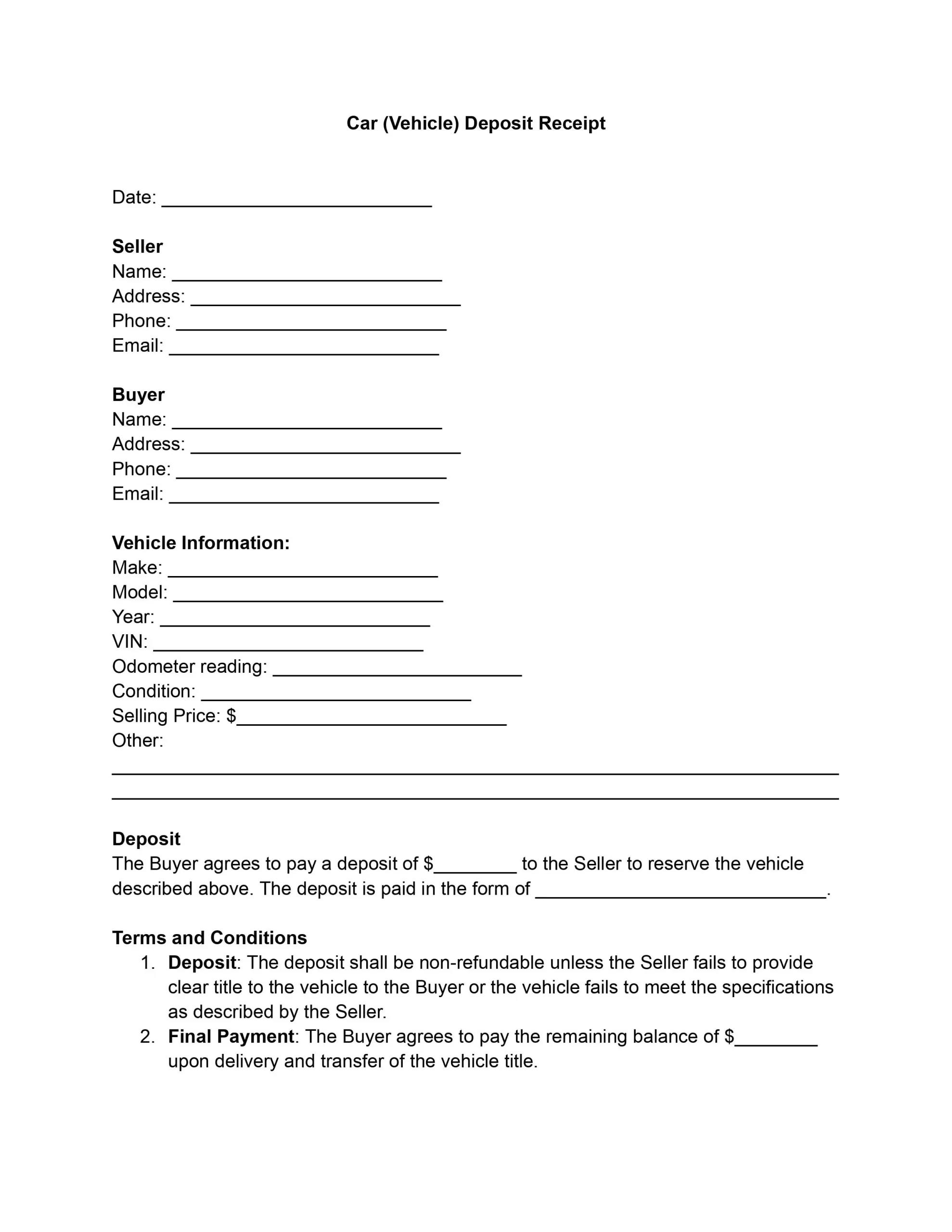Buying a vehicle is a significant milestone frequently involving large financial transactions and legal issues. Among the enthusiasm and planning that go into this process, one document stands out for its ability to protect both parties: the car deposit receipt. This seemingly simple piece of paper is essential to purchasing and selling a car.
A car deposit receipt confirms the buyer’s commitment to the vehicle and ensures that the seller keeps a record of the initial transaction. Its main purpose is to document the buyer’s deposit amount and act like a formal agreement outlining the sale’s terms and conditions.
What Is a Car Deposit Receipt Form?
A car deposit receipt is a written acknowledgment that the buyer has provided money as a deposit towards purchasing a vehicle. This deposit is usually a part of the total sale price and is paid in advance as a sign of the buyer’s commitment to the deal. Now, let’s look at the role of this document in the car-buying process:
- By handing over a deposit, the buyer signals serious intent to follow through with the purchase, allowing the seller to remove the vehicle from the market confidently.
- This document lays the foundation for trust by clearly documenting the transaction details, reducing the chances of disputes.
- A car deposit receipt often includes crucial information such as the vehicle’s condition, the final sale price, and any conditions that must be met before the sale is finalized.
You can use a vehicle deposit receipt template that provides a standardized format. It covers all necessary information, ensuring everything important is noticed. For businesses dealing in vehicle sales, using a consistent template across all transactions helps maintain professional standards. With a car deposit receipt template, you can quickly fill in the specific details of each sale, saving time and reducing errors.
How to Edit Car Deposit Receipt PDF Form
Following these steps ensures a thorough and accurate completion of the receipt for deposit on the car, providing a clear and binding agreement between the buyer and seller regarding the sale of the vehicle.
1. Date of Transaction
Please enter the date on which the car deposit receipt is being filled out. This marks the official start of the transaction process.
2. Seller Information
Input the seller’s name, address, phone number, and email address. This section identifies the individual or entity selling the car.
3. Buyer Information
Similarly, provide the buyer’s details, including their name, address, phone number, and email. This section identifies the prospective new owner of the car.
4. Vehicle Information
Detail the car’s specifics, such as make, model, year, Vehicle Identification Number (VIN), odometer reading, condition, total selling price, and other relevant information. This section ensures both parties are clear about the vehicle being sold.
5. Deposit Details
State the amount of deposit the buyer agrees to pay to reserve the vehicle. Include the form of payment for the deposit. This section formalizes the buyer’s intention to purchase and the seller’s agreement to hold the car for the buyer.
6. Terms and Conditions
Carefully review and enter the terms and conditions related to the deposit, final payment, vehicle delivery, title transfer, and the buyer’s inspection rights. This part of the receipt outlines the obligations and expectations of both parties, including conditions under which the deposit might be refundable.
7. Final Payment and Delivery Details
Specify the remaining balance due upon the car’s delivery and title transfer. Also, mention the agreed-upon date by which the car will be delivered to the buyer.
8. Signatures
The seller and the buyer should sign and date the receipt at the bottom. This act signifies that both parties acknowledge and agree to the terms outlined in the document.
